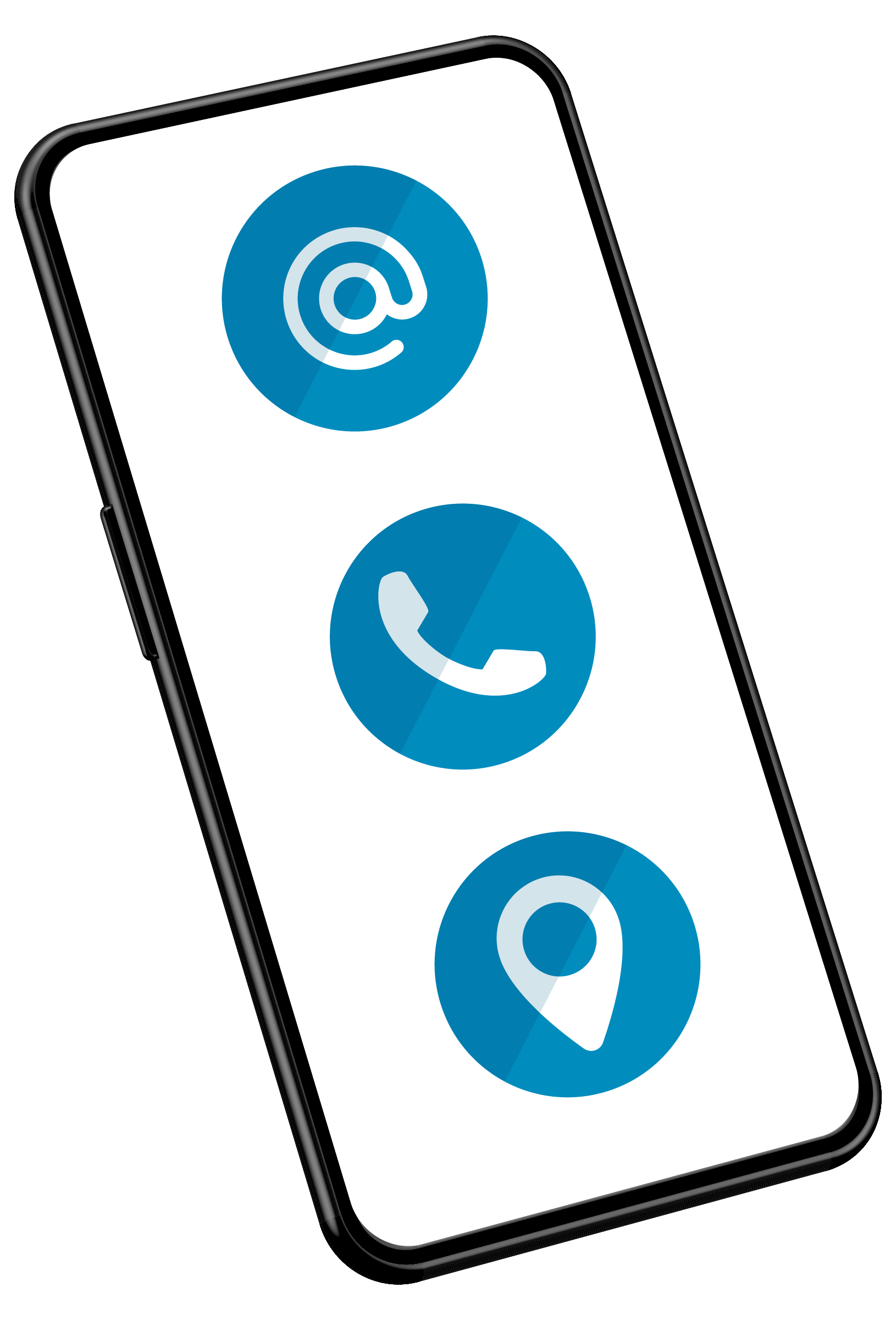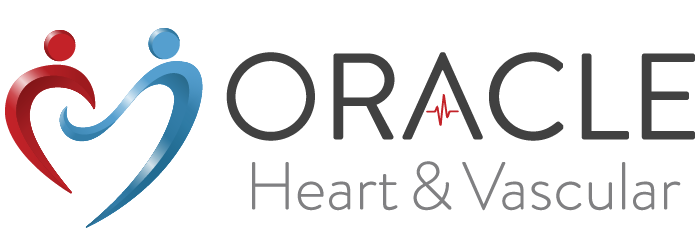Cardiovascular Procedures
While prevention and minimal invasive treatments are our goal, some interventions are necessary to address some cardiovascular conditions.
Here are some common procedures as a point of reference to help you understand their purpose in your overall treatment plan:
Transesophageal echocardiography (TEE) is a test that produces pictures of your heart. TEE uses high-frequency sound waves (ultrasound) to make detailed pictures of your heart and the arteries that lead to and from it.
Cardioversion is a medical procedure by which a cardiac arrhythmia is converted to a normal rhythm using electricity or medication.
Cardiac catheterization is a procedure used to diagnose and treat certain cardiovascular conditions. Percutaneous Coronary Intervention (PCI) is a procedure used to open blocked coronary arteries using angioplasty and stent implantation during a heart attack.
Peripheral angioplasty is a procedure similar to a cardiac angioplasty in which doctors may use balloon angioplasty or stenting to open narrowed vessels in other parts of the body.
- Remote Monitoring
A revolutionary device called CardioMEMs has allowed for a safe and reliable way to help manage heart failure. The tiny implant offers real-time notification from a patient’s home to our specialists. The data is personalized and provides attentive care that is clinically proven to significantly reduce hospital admissions through its monitoring capabilities.

To email us, use our contact form below:
Echo anchor
Transesophageal Echocardiography (TEE)
About the Procedure
A Transesophageal Echocardiogram is a diagnostic test. Unlike a standard echocardiogram (ECHO), a TEE involves a specialized probe containing an ultrasound transducer at its tip which is passed down the throat and esophagus. With the close proximity of the esophagus to your heart, very clear images of the heart’s structure and valves can be produced in order to see its function and anatomy. Our board-certified cardiologists perform TEEs in a hospital setting and the procedure generally takes 20-30 minutes.
Once you arrive at the hospital, you will check-in at patient registration. A volunteer will escort you to the appropriate department for your procedure and a nurse will begin an intravenous line. You will also process consent forms, provide medication information, and review any questions you may still have. A light sedation will be provided, which will help you drift off to sleep. Throughout the procedure, your vital signs will be monitored.
Preparing for the Procedure
Our office will be the liaison between you and the hospital in coordinating the best time for your procedure. Once your procedure is scheduled, we will call you with instructions and will review important medication instructions, as well as allergies/sensitivities information we need to be aware of. You will need to fast for a certain period of time before the procedure and you may be asked to follow other specific preparation instructions depending on your medical condition. It is important that you bring a detailed list of medications with their name, dose, and frequency with you to your procedure.
After the procedure
Following the procedure, your heart rate, ECG, blood pressure, and oxygen levels will be monitored for a period of time. Your cardiologist will review your results with you as soon as you are fully awake. Transportation arrangements will be necessary following this procedure.
cardioversion anchor
Cardioversion
About the procedure
Cardioversion is a medical procedure by which your cardiac arrhythmia (abnormal rhythm) is converted to a normal rhythm using electricity. Cardioversions are performed in a hospital setting with light sedation. This procedure is sometimes combined with a transesophageal echocardiogram (TEE) to confirm the absence of blood clots prior to cardioversion.
Once you arrive at the hospital, you will check-in at patient registration. A volunteer will escort you to the appropriate department for your procedure and a nurse will begin an intravenous line. You will also process consent forms, provide medication information, and review any questions you may still have. A light sedation will be provided, which will help you drift off to sleep. Throughout the procedure, your vital signs will be monitored.
Preparing for the procedure
Our office will be the liaison between you and the hospital in coordinating the best time for your procedure. Once your procedure is scheduled, we will call you with detailed instructions and will review important medication instructions as well as allergies/sensitivities information we need to be aware of. Our office will also advise you of any preprocedural tests needed. You will need to fast for a certain period of time before the procedure and you may be asked to follow other specific preparation instructions depending on your medical condition. It is important that you bring a detailed list of medications with their name, dose, and frequency with you to your procedure.
After the procedure
Following the procedure, your heart rhythm and vital signs will be monitored for a period of time. Your cardiologist will review your results with you as soon as you are fully awake. Transportation arrangements will be necessary following this procedure.
cardio-cath anchor
Cardiac Catheterization / Coronary Interventions
About the procedure
A cardiac catheterization is a diagnostic procedure that is done in a hospital setting with light sedation. Your heart’s electrical activity and vital signs will be monitored during the procedure. Several monitor screens in the room will display images of the procedure which are used by your healthcare team. A tiny catheter is inserted into a vein or artery through your groin, arm, or neck and is carefully guided into the aorta and into the heart. Contrast dye is then injected into the coronary arteries under fluoroscopy (X-ray) which creates images of the arteries called angiograms. If the angiogram reveals a blockage that compromises blood flow, a balloon may be inserted, expanded, and a stent may be deployed to scaffold the artery open. This mesh coil helps keep your artery open and will restore blood flow to the heart muscle.
Preparing for the procedure
Our office will be the liaison between you and the hospital in coordinating the best time for your procedure. Once your procedure is scheduled, we will call you with detailed instructions and will review important medication instructions as well as allergies/sensitivities information we need to be aware of. Our office will also advise you of any preprocedural tests needed. You will need to fast for a certain period of time before the procedure and you may be asked to follow other specific preparation instructions depending on your medical condition. It is important that you bring a detailed list of medications with their name, dose, and frequency with you to your procedure.
Once you arrive at the hospital, you will check-in at patient registration. A volunteer will escort you to the appropriate department for your procedure and a nurse will begin an intravenous line. You will also process consent forms, provide medication information, and review any questions you may still have. A light sedation will be provided, which will help you drift off to sleep. Throughout the procedure, your vital signs will be monitored.
After the procedure
After your procedure, you will be taken to a recovery room where your vital signs and procedure site will be monitored for 2-6 hours. Your cardiologist will review your results with you as soon as you are fully awake. Transportation arrangements will be necessary following this procedure.
You may be asked to increase your fluids to help flush the contrast dye from your body. Please also continue a heart-healthy diet as instructed by your provider. Once home, it is important that you regularly check your insertion site, while also keeping the site clean, dry, and following specific bathing instructions. A small bruise is normal, but we ask that you contact us right away if you have signs of bleeding, unusual pain, swelling, and abnormal discoloration or temperature change occurs.
Angio anchor
Peripheral angiogram / angioplasty / intervention
About the procedure
Peripheral interventions are similar to a cardiac catheterization, however, the areas being screened are not located directly in the heart. During these procedures, a small catheter is also inserted in your groin or arm and is carefully guided to the precise area. Contrast dye is then injected into the arteries under fluoroscopy (x-ray) to generate the peripheral angiogram (images of the vessels) on the lower extremities. If a blockage is identified to compromise flow, an angioplasty is performed where a balloon or stent is used to restore blood flow. During an angioplasty, your cardiologist will insert a metal mesh stent, which is an expandable cylindrical scaffolding that keeps the artery open to its normal size. The innovation of peripheral interventions has proven to be much less invasive and less risky of a procedure compared to alternative solutions for patients with PAD.
Preparing for the procedure
Our office will be the liaison between you and the hospital in coordinating the best time for your procedure. Once your procedure is scheduled, we will call you with detailed instructions and will review important medication instructions as well as allergies/sensitivities information we need to be aware of. Our office will also advise you of any preprocedural tests needed. You will need to fast for a certain period of time before the procedure and you may be asked to follow other specific preparation instructions depending on your medical condition. It is important that you bring a detailed list of medications with their name, dose, and frequency with you to your procedure.
Once you arrive at the hospital, you will check-in at patient registration. A volunteer will escort you to the appropriate department for your procedure and a nurse will begin an intravenous line. You will also process consent forms, provide medication information, and review any questions you may still have. A light sedation will be provided, which will help you drift off to sleep. Throughout the procedure, your vital signs will be monitored.
After the procedure
After your procedure, you will be taken to a recovery room where your vital signs and procedure site will be monitored for 2-6 hours. Your cardiologist will review your results with you as soon as you are fully awake. Transportation arrangements will be necessary following this procedure.
You may be asked to increase your fluids to help flush the contrast dye from your body. Please also continue a heart-healthy diet as instructed by your provider. Once home, it is important that you regularly check your insertion site, while also keeping the site clean, dry, and following specific bathing instructions. A small bruise is normal, but we ask that you contact us right away if you have signs of bleeding, unusual pain, swelling, and abnormal discoloration or temperature change occurs.

